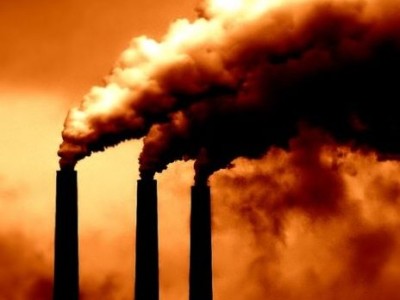War and the Environment: Ukraine in 2022
The environment is also a victim of the Russian invasion — perhaps to the point of being a war crime.
Memorial Day began as a day to commemorate the Civil War dead, then became a day to commemorate the dead from many wars. But war’s toll goes beyond direct harm to humans. The environment also suffers. On top of its human tragedies, the Russian invasion of Ukraine is also wreaking environmental havoc.
One source of concern involves destruction of industrial plants. Ukraine has many chemical plants and storage facilities, some of which have already been hit. Even more worrisome are Ukraine’s fifteen nuclear reactors. Its largest reactor has already seen intense fighting. Eastern Ukraine, where heavy fighting has been taking place, is home to oil depots, coal mines and nuclear power plants. Meanwhile, the Russians have already seized the exclusion zone around Chernobyl, starting fires, stirring up radioactive dust, and imperiling wildlife.
A more severe wildlife threat is connected with the Russian incursion into southern Ukraine. The Black Sea Biosphere Reserve is a haven for birds, some of which are rare or endangered like the white-tailed eagle. It is also a haven for the endangered sandy blind mole rat, the Black Sea bottlenose dolphins, and rare plants. The Reserve is now occupied by the Russians, and there have been fires big enough to be seen from space. There are also said to be widespread wildfires in parts of Ukraine.
The Black Sea reserve is not unique. Over a third over Ukraine’s protected areas are now occupied by the Russians. There’s not the slightest reason to think that they will give any heed to the ecological value of these areas.
As the war drags on, the environmental impacts will escalate. The environmental scars of war can be long-lasting. In France today, it is still possible to see the effects of the devastating forest destruction of World War I. It was not only the youth of Europe who were mown down by that senseless conflict. Soils in many places remain contaminated by heavy metals to this very day.
U.N. General Secretary said in 2014:
“The environment has long been a silent casualty of war and armed conflict. From the contamination of land and the destruction of forests to the plunder of natural resources and the collapse of management systems, the environmental consequences of war are often widespread and devastating.”
Only recently has the international legal system begun to take this harm into account. The U.N. claim commission established in the aftermath of the first Gulf War gave particular attention to claims of environmental harm, paving new ground in its efforts to measure damage to ecosystems. The UNCC was established after the first Iraq War to handle claims against Iraq for war-related damages. The U.N. Security Council held that Iraq “is liable under international law for any direct loss, damage, including environmental damage and the depletion of natural resources, or injury to foreign Governments, nationals and corporations, as a result of Iraq’s unlawful invasion and occupation of Kuwait.
This directive gave rise to intense dispute about compensation for damage environmental resources and for interim damages to those resources prior to restoration. The UNCC ultimately held that these damages were compensable. One method used to measure the value of resources was the cost of mitigation measures – for example, creating new wetlands to replace those that were destroyed by oil spills. This was used as a way to measure the loss of ecosystem services. The UNCC awarded approximately $5 billion dollars for 109 successful claims. The amount of damages was limited by the rigorous standards imposed by the tribunal. No doubt the actual amount of ecosystem harm was much greater. The Ukrainian government says that it intends to seek compensation based on the Gulf War precedent.
Under some circumstances, destruction of natural areas was deliberate, it may be considered a war crime. The definition sets a high hurdle: “widespread, long-term and severe damage to the natural environment which would be clearly excessive in relation to the concrete and direct overall military advantage anticipated.” [Rome Statute of the International Criminal Court, Art. 8(2)(b)(iv).) The Russians seem as heedless of environmental harm as they are to the loss of civilian life. Their environmental destruction could well mount to the level where this definition is met.
Although war can damage the environment, causation may also run in the opposite direction. There are increasing grounds for concern that climate change can interact with other factors to increase the changes of war. That does not mean that climate change will inevitably produce more war. It does seem likely to increase the odds of armed conflict in combination with weak economies, ethnic conflict, and impaired governance.
“War in not good for children and other living things” was a popular slogan years ago. It remains true, now as much as ever.
Reader Comments
2 Replies to “War and the Environment: Ukraine in 2022”
Comments are closed.






Earth, the human race has a leadership problem, all of our institutions are failing to meet the most important challenges of change, even though The Lessons of History warned us:
50 years of UN environmental diplomacy: What’s worked and the trends ahead
https://theconversation.com/50-years-of-un-environmental-diplomacy-whats-worked-and-the-trends-ahead-182207
Leadership/Institutional Failures that are producing an unacceptable quality of life for our newest generations today:
Global Warming and Environmental Disasters
Wars
Pandemics
Washington Politicians who enable Mass Murders of American Children and Minorities, and Violence
Overthrow of American Democracy by the Power of Money over Washington Politicians